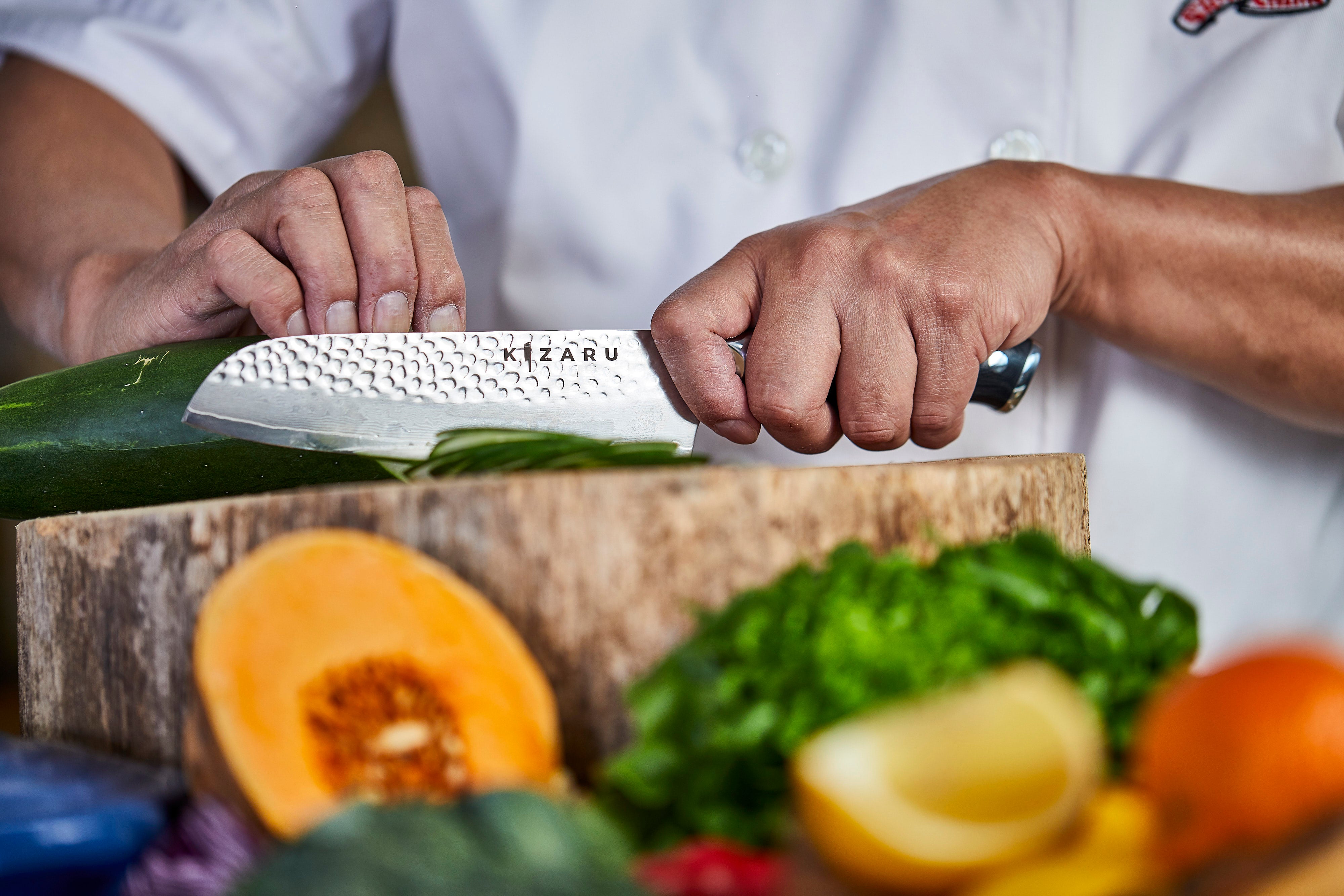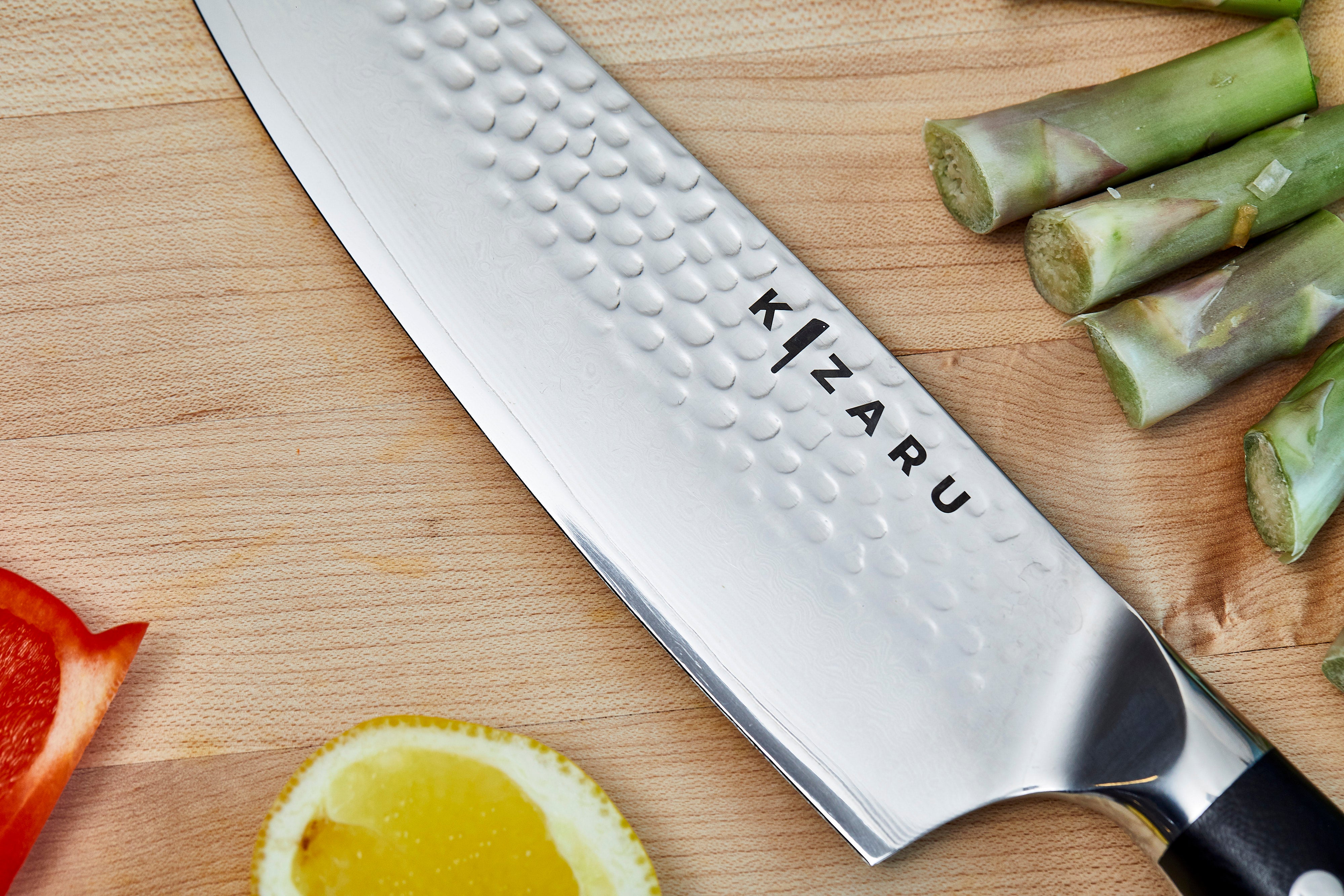
The 3 Must-Have Knives In Your Kitchen | The Different Types Of Knives
If you're wondering what types of knives to get for your kitchen, there's a short answer and a long answer.
The short answer is that you shouldn't overthink it—a chef knife works decently well for most cutting tasks out there, so having a good one already sets you up to defend yourself in the kitchen.
However, this probably isn't the boring short answer you're looking for.

You probably want to know what knives are the most versatile to cover all your bases, so that you can focus on buying the most important kinds. After all, there's no denying that using a type of knife that's especially designed for the job at hand does make things easier.
So, in this article, we'll cover the long answer by detailing the 3 essential knives to have in the kitchen.

The 3 Must-Have Blades To Have In Your Kitchen
1.The Chef Knife
As already mentioned, this is the most important knife you'll ever have. It's the bread and butter when it comes to cutting, slicing or chopping—simply put, if you could only have one knife, it should be this one.
This knife tends to be relatively long (usually from 7' to 12') to allow for single-stroke cuts when slicing, and also features a curved edge to allow for a "rocking" chopping style of cutting. Being so versatile is what makes a chef knife king. It works for both cutting tough chicken or slicing small vegetables.
Shopping for a chef knife is a personal experience. You're usually looking for a chef knife that feels great in your hand and doesn't put too much pressure on it—so it's all about the right weight and size.

2. The Santoku Knife
The Santoku, like the chef knife is a well-rounded knife that works for most purposes. However, the main difference is that the Santoku is better suited for precision tasks that require higher control and maneuverability.
Therefore, the Santoku knife is usually built with a thinner blade that's shorter and lighter than its counterpart, achieving this desired accuracy.
Whenever given the choice to use a chef knife or a Santoku knife, many pick the Santoku due to it's maneuverability (not a bad choice) but if you're dealing with large chunks of meat or boned food, it's advised to use the chef knife instead. Otherwise, you might end up with a chipped knife.
Note: A thinner blade leads to increased fragility. This is why the Santoku doesn't mix well with tough material.

3. The Utility Knife
Sometimes size does matter—and smaller can be better.
Measuring around 4' to 7', the paring knife is excellent for cutting food that is too small for a chef knife.
Its small tip and narrow blade is great for thin slicing, filleting, and peeling fruits. Looking at it's size it's pretty self-explanatory why it's so convenient for these tasks. Using anything bigger could feel awkward—or worse, lead to an unnecessary finger cut.

Wrapping Up: What Knives To Get
As covered, with these 3 knives you'll be ready to handle any cooking task thrown your way. They will help you do everything effortlessly and optimally.
Specifically, we recommend the 3-Set Kizaru Kanji Chef Knives.
It's a biased recommendation, but it's a top-rated knife designed for home cooks—made with sharpness and durability in mind. This set includes a chef knife, a Santoku knife, and a utility knife. You can get it here.

With that said, no matter what brand or model you end up with, the most important takeaway from this article is to prioritize the correct types of knives. Doing so will ensure you end up with a suitable set for all cutting tasks.



